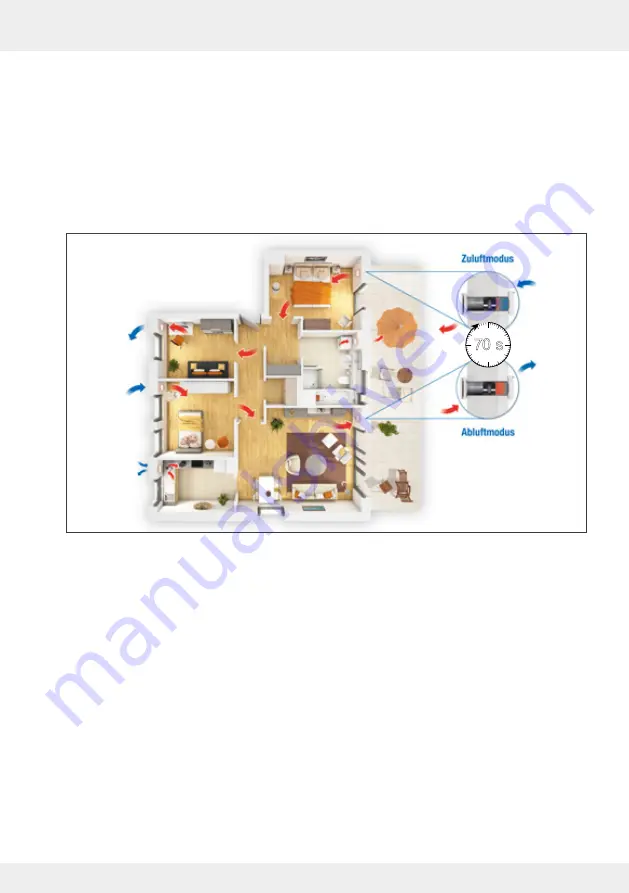
10
SYSTEM OVERVIEW: IV-SMART+ VENTILATION DEVICE
10
iV-Smart+ ventilation device | Installation instructions
2.2 Function
Decentralised ventilation
Decentralised ventilation systems combine extract and supply air and are based on free air
movement between individual pairs of ventilation devices (cross-ventilation). The cross-ventila-
tion principle allows the air to circulate through the entire residential device and also sufficiently
ventilate interior living spaces. Each ventilation device is mounted in its own air duct so as not to
obstruct other ventilation processes.
The decentralised iV ventilation systems with heat recovery consist of ventilation devices
arranged in pairs with simple air flow. They operate according to the principle of heat recovery by
changing the direction of the fan. The integrated thermal accumulator is charged with the thermal
energy of the room air as it flows externally (extract air). After 70 seconds, the reversing fan
changes the direction of rotation each time. After the direction of rotation has changed, the heat
accumulator releases the stored heat energy to the incoming fresh air (supply air).
For this principle to work correctly and to ensure pressure stability in the room, the supply air
volume must always correspond to the extract air volume, i.e. at least two ventilation devices are
required. These are operated in pairs in push-pull mode: another ventilation device is assigned to
the ventilation device that delivers supply air and at the same time removes used extract air from
the interior to the outside.
You operate the iV ventilation systems intuitively with the matching inVENTer controllers.
Different operating modes or the air volume flows can be set individually.
The most important components of the iV system are the ceramic thermal accumulator, the
reversing fan, air guiding vanes for straightening the air volume flow, filters for different hygienic
requirements, a closable inner cover and an outer cover. A control device (controller) completes
the system.
70 s











































